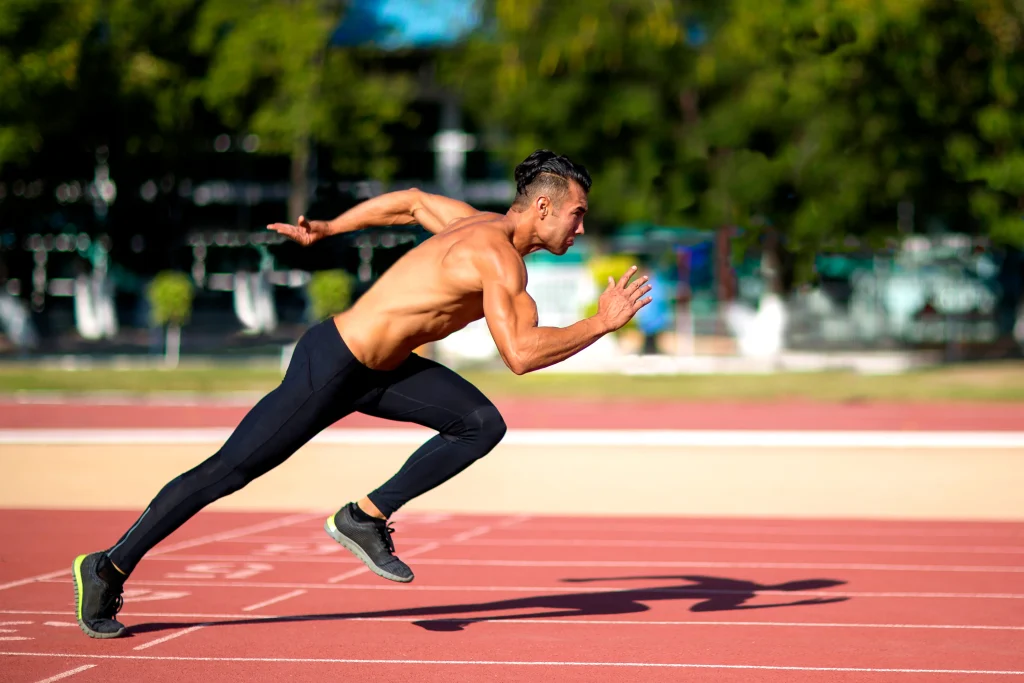
The first 10 yards of the 40-yard dash are the launchpad for overall time and top-end speed. This phase is where acceleration is built, mechanics are locked in, and momentum is created. For elite athletes, the quality of these first 5–6 steps often determines whether they hit their peak performance—or fall short.
Why the First 10 Yards Matter
Speed in the 40 is not about maintaining top velocity—it’s about how quickly you can get there. The 0–10 yard segment is where you generate horizontal force and establish your sprint posture.
A poor first 10:
- Delays max speed
- Wastes energy with inefficient steps
- Leads to overstriding or vertical force leaks
- Forces compensation that affects the entire sprint
A great first 10:
- Projects the athlete forward with low, powerful angles
- Uses optimal stride length and frequency
- Minimizes time on the ground and maximizes force into the ground
Step Count Guidelines
- High-level athletes typically reach the 10-yard mark in 6 steps
- Elite sprinters may get there in 5 powerful, efficient strides
Trying to “reach” for distance can lead to overextension, breaking posture and slowing ground contact. Every step should be deliberate, compact, and forceful.
Key Mechanics of the First 10 Yards
1. Projection Angle
Maintain a forward lean of 45 degrees or more in the first 2–3 steps. This angle helps direct force horizontally rather than vertically.
2. Shin and Torso Alignment
The front shin at push-off should match the angle of the torso. This alignment drives momentum forward and avoids energy leaks.
3. Push, Don’t Reach
Each stride should result from pushing off the ground, not reaching forward. Overstriding leads to braking forces and longer ground contact times.
4. Arm Action
Drive the arms aggressively and symmetrically. The arms set rhythm and balance for the lower body. A fast arm equals a fast leg.
5. Gradual Rise
Athletes should not “pop up” in the first few steps. Posture should rise progressively through step 6–10, maintaining low heel recovery and a compact stride.
6. Foot Strike Mechanics
The first steps should be down and back, with the foot striking under or slightly behind the center of mass. Stay away from heel striking or reaching beyond the hip.
Common Errors to Avoid
- Overextension on the first step or two
- Standing up too soon, which kills acceleration
- Crossing over midline with arms or legs
- Passive foot strikes with poor force application
- Lack of rhythm between steps and arm action
Training Focus for the First 10 Yards
To improve this critical segment, integrate:
- Sled or band-resisted sprints
- Step count drills (marking 5–6 steps to 10-yard target)
- Wall drills and falling starts for projection
- Frame-by-frame video analysis for posture and angles
- Bounding or power skips to reinforce stride timing
The Takeaway
The first 10 yards are a technical, neurological, and explosive display of athletic ability. They should be trained with precision, not rushed through. Focus on force, posture, and rhythm—not just speed.
Build the first 10 right, and the rest of the 40 follows.
Sources
- Clark, K. P., & Weyand, P. G. (2014). Are running speeds maximized with simple-spring stance mechanics? Journal of Applied Physiology, 117(6), 604–615.
- Mann, R. V. (2013). The Mechanics of Sprinting and Hurdling. CreateSpace Independent Publishing.
- Murphy, A., Lockie, R., & Coutts, A. (2003). Kinematic determinants of early acceleration in field sport athletes. Journal of Sports Science & Medicine, 2(4), 144–150.
- Wild, J. J., Bezodis, N. E., & Blagrove, R. C. (2023). Sprint start and acceleration performance: A review of biomechanics and training interventions. Sports Medicine, 53, 601–616.
Leave a Reply